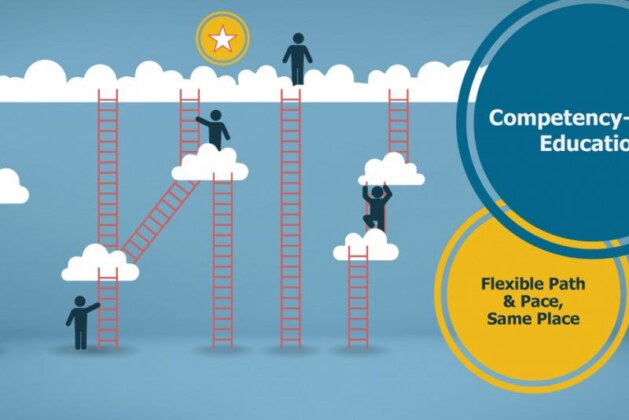As education systems around the world face increasing pressure to produce job-ready graduates, traditional time-bound learning is being questioned. In its place, Competency-Based Education (CBE) is gaining traction—a model that emphasizes mastery of skills over time spent in a seat. This article dives into how countries are adapting CBE to meet the demands of modern learners and the global economy.
Table of Contents
Introduction: The Shift from Time to Talent
In a world where innovation outpaces curriculum updates and employers care more about what you can do than what grades you scored, the traditional education model feels increasingly outdated. For decades, “seat time”—the amount of time a student spends in a classroom—has been the standard measure of academic progress. But a growing number of education leaders and policymakers are flipping the script.
Competency-Based Education (CBE) is an educational approach that prioritizes demonstrable learning outcomes over how long it takes a student to achieve them. The result? A more personalized, equitable, and practical way to prepare learners for real-world success.
What Is Competency-Based Education (CBE)?
At its core, CBE is about mastery. Instead of passing a course based on hours attended or a final exam alone, students in a CBE system must show that they’ve actually mastered the skills and knowledge outlined in their learning objectives.
Key features of CBE include:
- Clear Learning Outcomes: Competencies are defined clearly in terms of what students must know and be able to do.
- Pacing Flexibility: Learners move at their own speed, advancing upon mastery—not a fixed schedule.
- Assessment for Mastery: Continuous, formative assessments ensure deep understanding before moving forward.
- Personalization: Instruction adapts to meet learners where they are, often aided by technology.
What is Competency-Based Education (CBE)?
CBE is a learner-centered approach where progress is determined by the student’s ability to demonstrate competency in a subject, rather than the amount of time spent on it. It’s about outcomes, not inputs.
Core Principles of CBE:
- Mastery over Seat Time: Students move on only after proving understanding.
- Personalized Learning Paths: Instruction adapts to the learner’s pace and needs.
- Real-World Skills Focus: Emphasis on applicable knowledge, not just theoretical content.
- Flexible Assessment: Evaluations are varied and ongoing, not just a final exam.
- Transparency: Students know what’s expected and how to achieve it.
CBE Around the World: Global Models in Action
United States
CBE has gained traction in states like New Hampshire, which replaced Carnegie Units with a competency-based diploma. Schools in Colorado, Oregon, and Wisconsin are also piloting models that let students demonstrate proficiency through projects, portfolios, and real-world performance.
Finland
Long known for its progressive education system, Finland has integrated CBE concepts into its curriculum reform. Rather than rigid subject boundaries, Finnish students engage in phenomenon-based learning—interdisciplinary studies that develop key competencies such as critical thinking and collaboration.
New Zealand
New Zealand’s National Certificate of Educational Achievement (NCEA) framework allows students to earn credits by demonstrating specific competencies in both academic and vocational tracks. This flexibility empowers students to shape their learning around strengths and career goals.
Singapore
Singapore blends traditional excellence with CBE innovations through its SkillsFuture initiative. The program encourages lifelong learning and includes modular, skills-based training that aligns with industry needs—a national-level implementation of CBE for both students and adult learners.
Kenya
Kenya’s new Competency-Based Curriculum (CBC) rolled out in 2017, focusing on nurturing individual potential, communication, and digital literacy from an early age. The goal: prepare a workforce that’s ready for the 21st century, not stuck in outdated rote systems.
Why is CBE Gaining Momentum?
Relevance to the Job Market
Employers want more than degrees—they want skills. CBE makes it easier to connect what students learn with what they need to succeed in the real world.
Technology-Enabled Learning
Online platforms allow for personalized pacing and competency tracking, making CBE scalable and efficient.
Equity and Inclusion
By allowing learners to move at their own pace, CBE can accommodate different learning styles and backgrounds, helping to close achievement gaps.
Student Engagement
When learners understand why they’re learning and can see their progress clearly, motivation increases. CBE empowers students to take ownership of their education.
Challenges and Criticisms
While CBE is promising, it’s not without hurdles:
- Assessment Complexity: Measuring mastery across subjects and soft skills can be subjective and difficult to standardize.
- Teacher Training: Educators must shift roles—from lecturer to facilitator and coach.
- Systemic Resistance: Traditional systems and standardized tests are deeply embedded in policy and culture.
- Scalability: Implementing CBE at scale requires major investment in technology and curriculum design.
What the Future Holds
Competency-Based Education is not a silver bullet—but it is a compelling response to a world that demands more from its learners. As global economies shift and automation reshapes industries, the need for adaptable, demonstrably skilled individuals grows.
CBE offers a model of education that’s better aligned with the future of work, the realities of life-long learning, and the varied ways humans acquire knowledge.
Conclusion: From Compliance to Competence
In an era where skills matter more than scores, Competency-Based Education is paving a new path. It’s not about passing tests—it’s about proving you’re ready. Whether in Nairobi, New York, or New Delhi, the rise of CBE signals a powerful reimagining of what education should be: meaningful, measurable, and made for real life.
Read More: Calm Amidst Chaos: Mindfulness Techniques for Thriving in Mumbai’s Hustle




